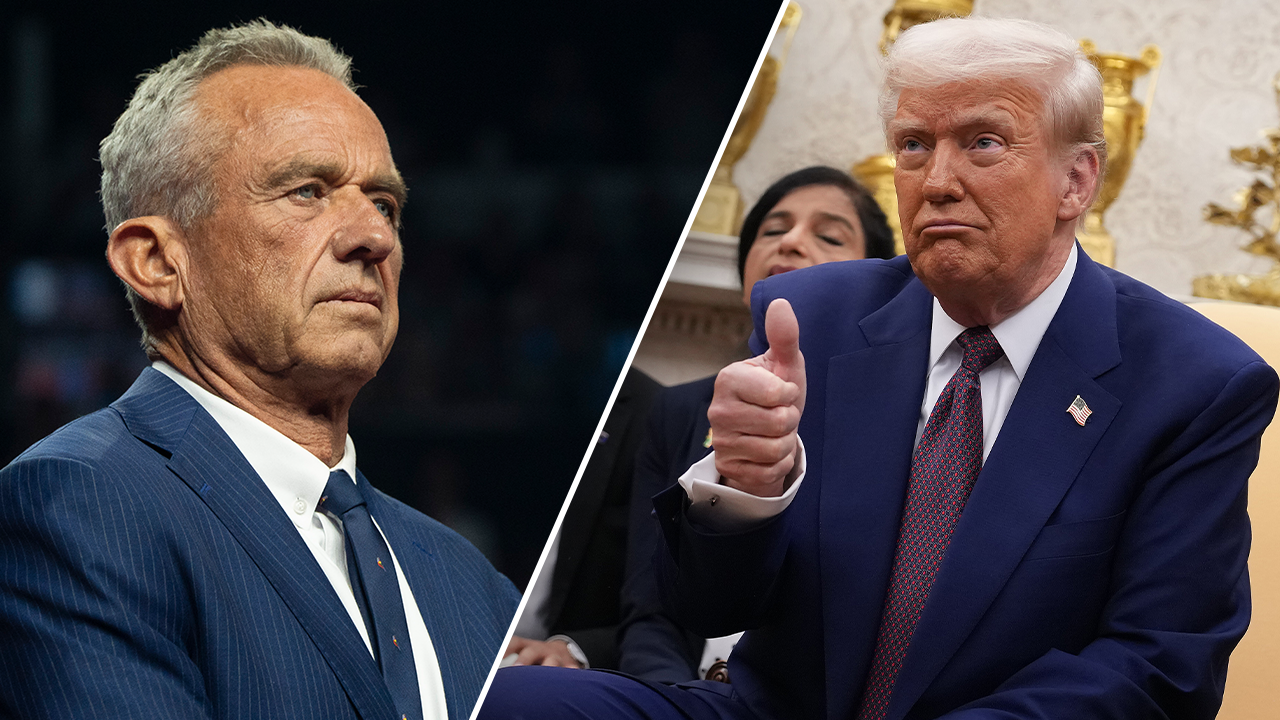Politics
Trump admin lays out who exactly was cut at HHS in face of ‘Democrat hysteria’

HHS Staffing Changes: Separating Fact from Fiction
The Department of Health and Human Services (HHS) has found itself at the center of a heated debate over staffing levels and recent cuts within its agencies. Despite claims of "Democrat hysteria" over layoffs, HHS currently employs nearly 6,000 more people than it did in 2019, according to a senior Trump administration official. This includes significant increases at key agencies such as the Food and Drug Administration (FDA), which has grown by over 2,000 employees since 2019, and the Centers for Disease Control and Prevention (CDC), which has added 1,200 employees during the same period. The official emphasized that hiring at HHS surged by 17% between fiscal year 2019 and 2024, with government jobs accounting for 50% of all U.S. jobs created in 2024. While there have been 6,000 departures from HHS since January 20, including some layoffs, the department remains staffed at levels higher than in 2019. The official dismissed concerns about essential offices being depleted, stating that every operating division within HHS either has more employees or roughly the same number as it did in 2019.
Trump Administration’s Vision for a Streamlined HHS
The Trump administration has made it clear that its goal is to streamline the federal government by cutting overspending and addressing potential fraud or mismanagement. This effort has led to layoffs at various agencies, including HHS. However, the administration has been careful to exempt certain critical roles from these cuts. For example, employees focused on emergency preparedness and response, research scientists at the CDC and National Institutes of Health (NIH), frontline healthcare providers at the Indian Health Service, and those working on Medicare and Medicaid at the Centers for Medicare and Medicaid Services (CMS) were not affected. Additionally, staff involved in refugee resettlement within the Administration for Children and Families were also spared. The administration has emphasized that these cuts do not compromise the health and safety of Americans.
Robert F. Kennedy Jr.’s Agenda for HHS
Robert F. Kennedy Jr., the newly sworn-in Secretary of Health and Human Services, has wasted no time in shaping the department’s future. Alongside his confirmation, President Trump signed an executive order establishing the "Make America Healthy Again" (MAHA) Commission, which will investigate and address the root causes of America’s escalating health crisis. The commission’s initial focus will be on childhood chronic diseases, such as autism, which affects one in 36 children in the U.S. Kennedy has pledged to scrutinize the department’s previous practices, remove financial conflicts of interest, and ensure that taxpayer dollars are spent on improving the health of Americans. This includes supporting healthy foods, scrutinizing chemical additives in the food supply, and producing unbiased scientific reports. Kennedy and Trump have both promised to prioritize health issues, particularly autism, as part of their "Make America Healthy Again" platform.
The "Make America Healthy Again" Commission: A New Focus on Chronic Diseases
The MAHA Commission is expected to play a pivotal role in addressing the nation’s health challenges. Within its first 100 days, the commission will publish an assessment of what is known about the childhood chronic disease crisis, including international comparisons. By 180 days, it will develop a strategy to improve the health of America’s children based on its findings. The commission’s work will also extend to chronic conditions affecting adults. This initiative reflects the administration’s commitment to tackling long-term health issues that have been overlooked or underfunded in the past. The focus on autism and other chronic diseases aligns with Kennedy’s long-standing advocacy for addressing these conditions, which have become a growing concern for families across the country.
Pushback from Employees and Academic Unions
Not everyone is supportive of the changes at HHS. The head of the FDA’s food division, Jim Jones, recently resigned in protest of what he called the administration’s "indiscriminate firing" of staff. Jones argued that these layoffs would hinder the department’s ability to achieve its goals, including reducing diet-related chronic diseases and risks from chemicals in food. He expressed frustration with the administration’s approach, stating that it would be "fruitless" for him to continue in his role given the cuts. Additionally, federal employees staged a protest outside HHS headquarters in Washington, D.C., and academic unions have called for a "National Day of Action" to rally the science community against the layoffs. These demonstrations highlight the growing tension between the administration and some of its employees, who fear that the cuts will undermine the department’s mission.
State Lawmakers Join the Movement
The impact of Kennedy’s agenda and the MAHA Commission is not limited to the federal level. State lawmakers across the country have introduced bills aimed at advancing the priorities championed by Kennedy and the "Make America Healthy Again" movement. These initiatives include banning junk food like candy and soda from school lunches and amending state vaccine rules. The surge in state-level legislation reflects the growing influence of Kennedy’s health agenda and the broader push to address chronic diseases and improve public health. As the MAHA Commission proceeds with its work, it is likely that we will see even more efforts at both the federal and state levels to tackle these pressing health challenges. The coming months will be critical in determining whether these initiatives can lead to meaningful change and improve the health of Americans.


















